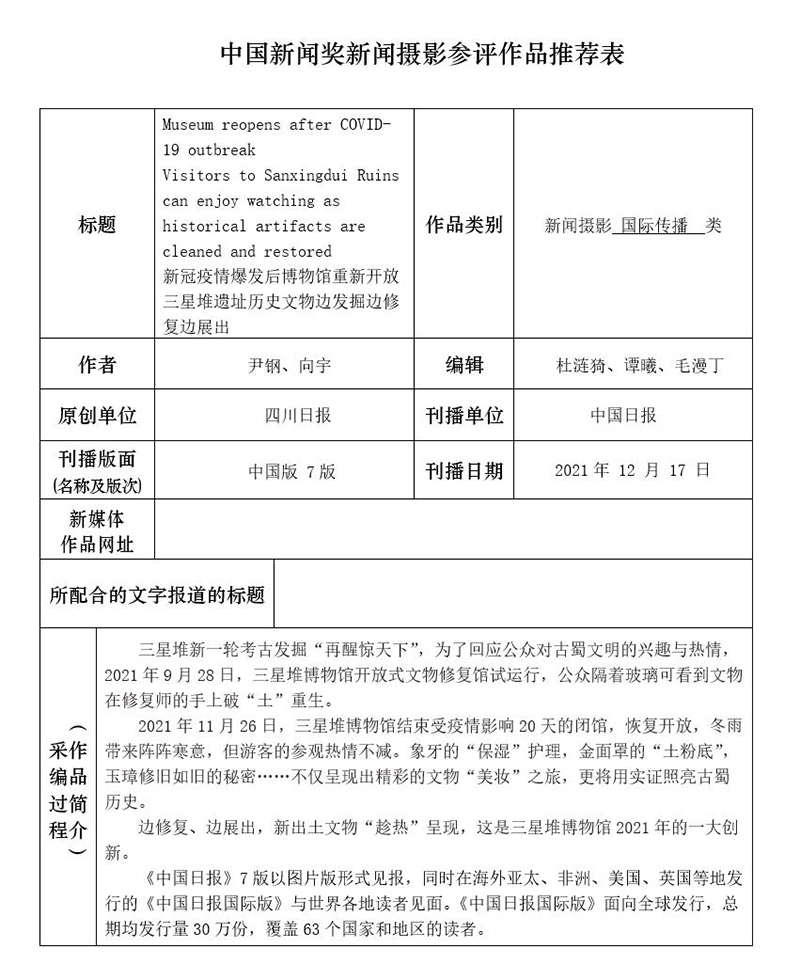On Nov 26, the Sanxingdui Museum in Guanghan, Sichuan province, reopened to the public after closing for 20 days because of a COVID-19 outbreak in the area.
Through a glass wall, visitors can again watch as workers clean and restore historical artifacts discovered in the No3 and No4 pits at the Sanxingdui Ruins site, on which the museum sits.
The digging of the No 3 pit started on Jan 9 and is expected to finish this year. Excavation of the No 4 pit, which began in October last year, was completed on Aug 19. A total of 1,771 artifacts were excavated from the two pits, of which 557 are relatively intact.
In one area, mud and dirt encrusting the surface of elephant tusks are removed by restorers, who then wrap them in layers of protective film and gauze.Afterward, they are stored in a special temperature- and humidity-controlled case for further research.
“Artifacts are legacies left by our ancestors and should be shared with the public,” said Zhu Yarong, deputy curator of the museum.
With the help of audio and video explanations and other exhibition methods, Zhu said the public can get a glimpse of archaeological work and gain deeper insight into the restoration of artifacts. So far, the restoration area has specific rooms for chinaware, jade ware, metal ware and elephant tusks.
The Sanxingdui Ruins, which are 40 kilometers north of Sichuan regional capital, Chengdu, cover 12 square kilometers. Archaeological discoveries show that it was a highly developed and prosperous cultural hub existing between 2,800 and 4,800 years ago.
因为新冠肺炎在该地区爆发,四川广汉三星堆博物馆在关闭20日后,于11月26日重新向公众开放。
透过玻璃墙,参观者可以再次欣赏到博物馆内清洁和修复好的3号和4号坑中发现的历史文物三星堆遗址。
三号坑的挖掘于1月9日开始,计划于今年完成。4号坑的挖掘,从去年10月开始,已于8月19日完成。共计有1,771件文物从这两个坑中发掘,其中557件文物相对完整。
在其中一个修复地,修复人员移走覆盖在象牙表面的泥浆和污垢,然后再用一层又一层胶卷和纱布的包起来,以作保护。随后,象牙被储存在特殊的温度湿度控制箱以供后续研究。
博物馆副馆长朱雅荣表示,“文物是祖先给我们留下的遗产,应该与公众共享”。
朱馆长说,借助音频和视频讲解,及其他展览途径,公众可以了解到古工作,也会对文物的修复有更深入的了解。到目前为止,修复区有为瓷器、玉器、金属器 皿,和象牙所专门设置的房间。
三星堆遗址坐落于四川省省会城市成都以北40公里,占地12平方公里。考古发现表明,在2,800至4800年前,这曾是高度发达、繁荣的文化中心。
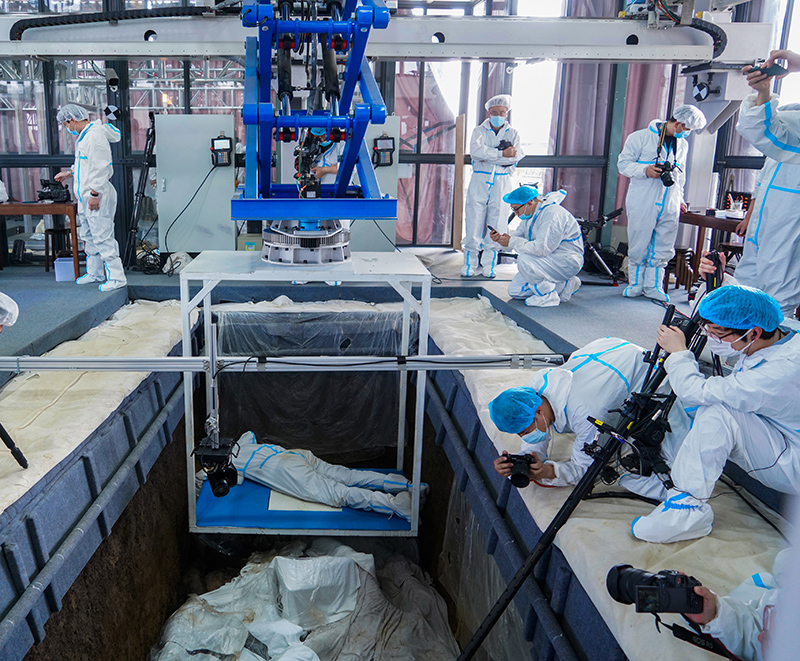
Archaeologists work to excavate relics from the No 3 pit at the ruin site on March 15.
3月15日,考古学家在遗址3号坑挖掘文物。
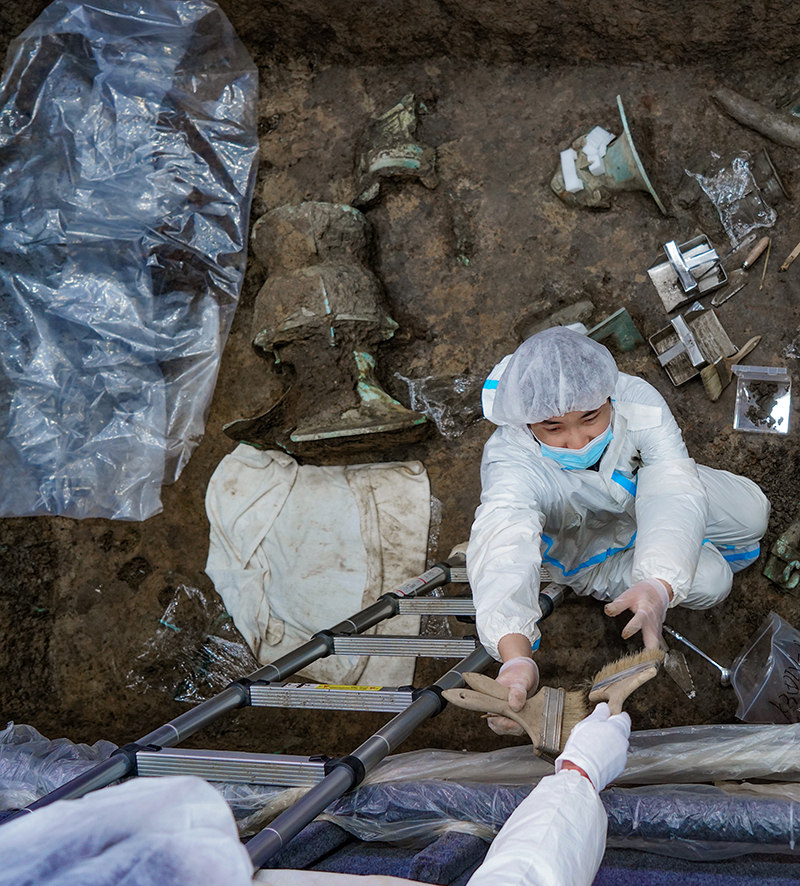
Archaeologists work at the No 3 pit on March 10.
3月10日,考古学家在3号坑工作。

Restorers wrap an elephant’s tusk in layers of protective film and gauze in the museum’s restoration area while their work is livestreamed to visitors on TV on Nov 26.
11月26日,在博物馆的修复区,修复人员用保护膜和纱布层层包裹着一根象牙,整个过程以线上直播方式展示给大众。
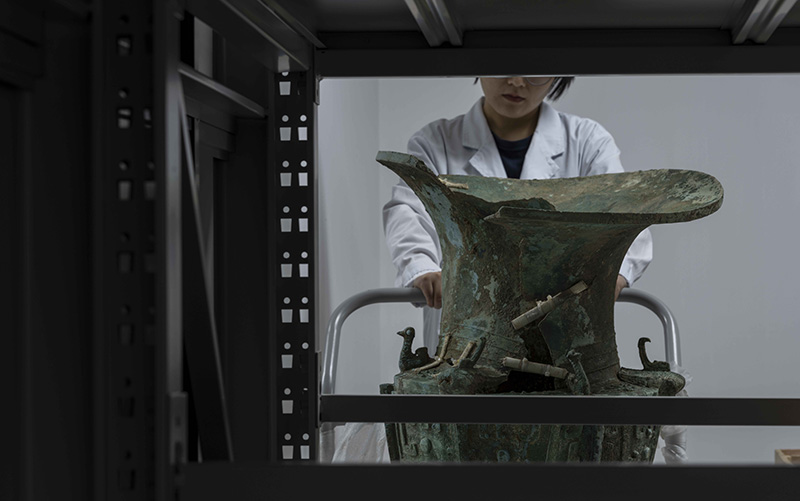
A restorer moves a bronze jar into a storage cabinet at the museum.
修复师将一个青铜器搬进博物馆的储藏柜。
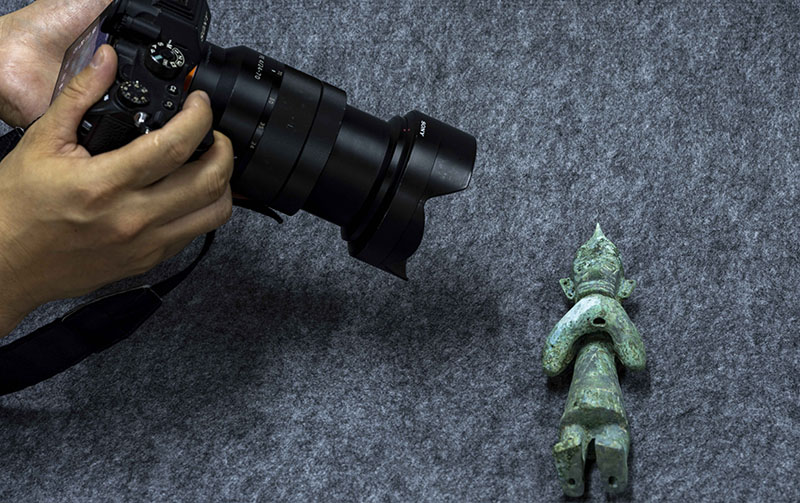
A restorer takes a closeup of a bronze figurine excavated from the No 3 pit at the Sanxingdui Ruins site before starting its restoration at the Sanxingdui Museum in Guanghan, Sichuan province.
四川省广汉市三星堆博物馆,一名修复人员在开始修复之前,拍摄了一个从三星堆遗址3号坑出土的青铜雕像的特写镜头。
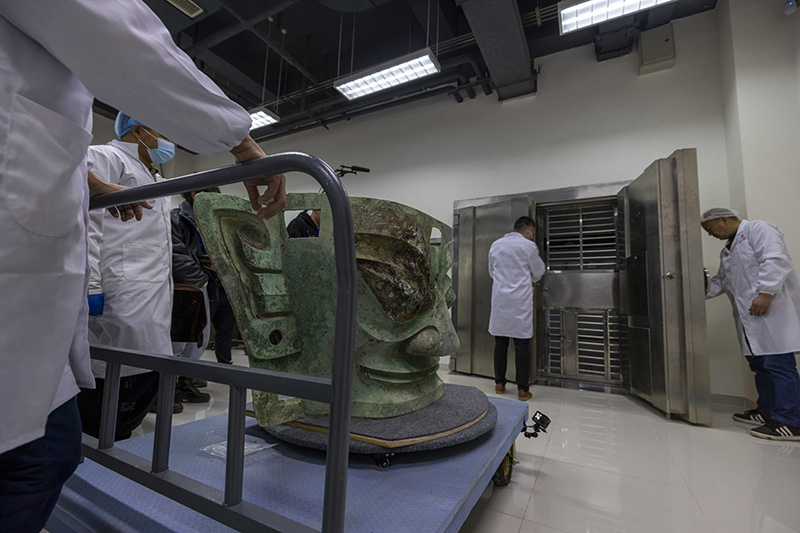
Restorers transport a restored bronze mask to the museum’s warehouse on Nov 26.
11月26日,修复者运送修复的青铜面具到博物馆的仓库。
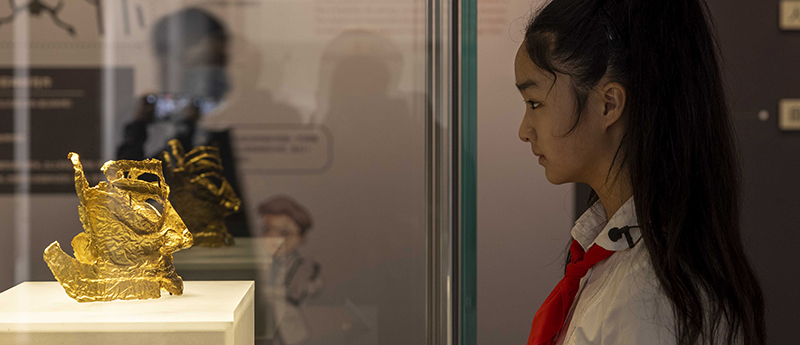
visitor looks at a gold mask on display at the museum on Nov 26.
11月26日,参观者在参观博物馆展出的金面具。
